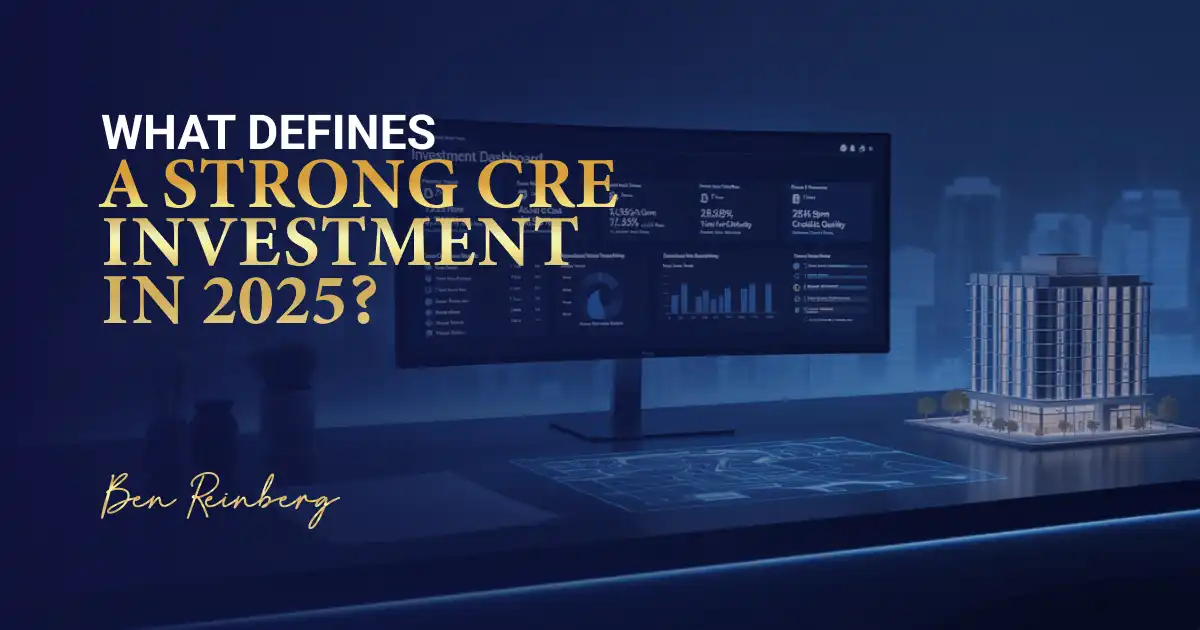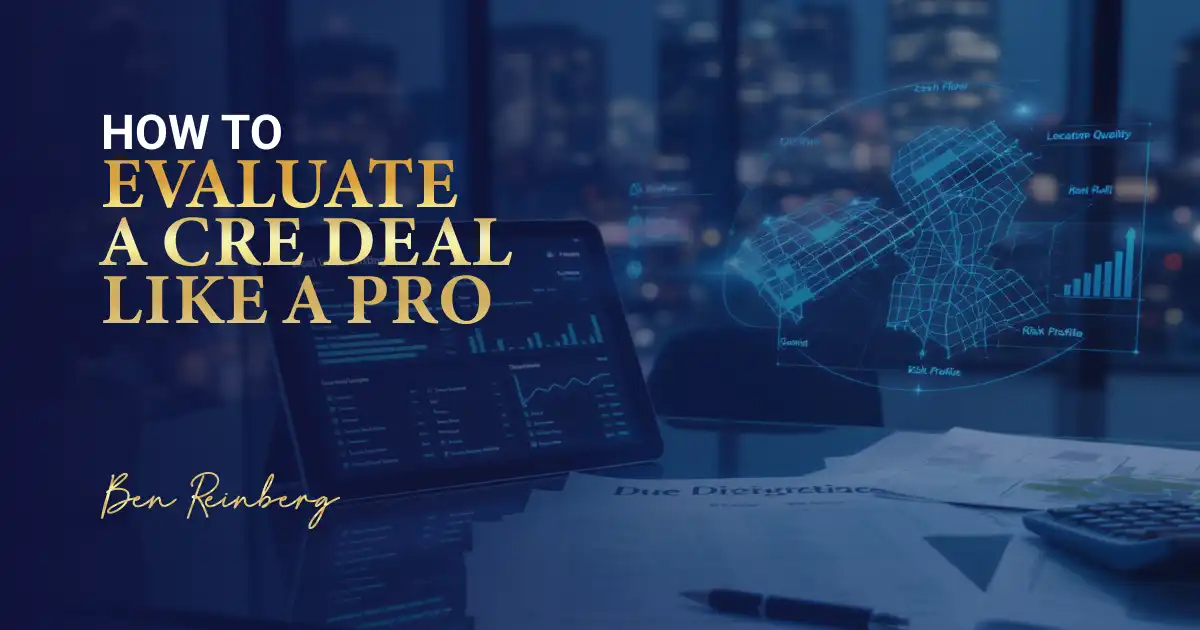
Why Real Estate is the Foundation of Wealth Creation
March 13, 2024
Discover the transformative power of a wealth mindset in real estate investment.
Read More >>>
The best commercial real estate investments currently include industrial properties, multifamily housing, healthcare facilities and niche assets, such as cold storage and data centers. These sectors continue to outperform due to strong demand, steady returns and resilience in the face of ongoing market shifts.
In contrast, traditional office investments are no longer the reliable choice they once were. As hybrid and remote work models continue to reshape how companies operate, office occupancy rates have steadily declined, with United States office vacancies reaching a record high of 20.4% in early 2025, according to Fast Company and New York Offices. This has left many investors facing prolonged vacancies, weaker lease activity and falling asset values in previously prime markets.
Amid these changes, where are the best commercial real estate (CRE) investments in 2025, and how can you position yourself ahead of the curve?

A strong CRE investment in 2025 is defined by more than just yield; it’s about long-term performance rooted in fundamentals. In today’s unpredictable market, the most reliable assets aren’t always the flashiest. They’re the ones that quietly deliver stability, even when conditions shift.
The top-performing CRE investments this year typically share five essential characteristics:

What makes a commercial real estate asset truly perform in 2025 isn’t trend-chasing; it’s meeting real, everyday demand. The strongest sectors this year aren’t speculative; they’re rooted in how people live and work. Healthcare, housing and logistics continue to lead because they offer essential utility, stable occupancy and long-term durability.
Here are five asset classes that are consistently outperforming across market conditions.
As outpatient care grows and healthcare decentralizes, MOBs remain one of the most dependable CRE assets in 2025. Tenants often opt for primary care or specialists, signing long-term triple-net leases and rarely relocate due to high buildout costs and the need for patient continuity.
With national occupancy above 90% (Revista, 2024) and average internal rates of return (IRRs) between 12 and 14%, MOBs offer stable cash flow, low turnover and strong tenant retention. For investors seeking predictable income and operational simplicity, MOBs remain a resilient, fundamentals-driven asset class.
Industrial real estate is expected to remain a top-performing CRE asset in 2025, driven by essential demand from e-commerce, food distribution and manufacturing. Facilities like cold storage and last-mile delivery centers benefit from strategic proximity to logistics hubs, with markets such as Dallas and Phoenix reporting vacancy rates below 4%.
Tenants typically sign leases of 7–10 years and operational costs are low, making these assets both stable and efficient. With demand driven by core supply chain functions, not market cycles, industrial properties continue to offer investors predictable income and long-term resilience.
It comes down to reliable demand, long-term tenancy and resilience in the face of recession. These properties, ranging from dental and behavioral health clinics to veterinary practices, provide essential, local services. Tenants are often owner-operators who invest in their space and stay long term, reducing turnover and vacancy risk. Demand for these services remains steady regardless of market cycles, making them attractive in uncertain environments.
Investor interest is growing fast. According to CoStar, veterinary real estate transactions totaled nearly $850 million between 2022 and 2024, with cap rates averaging 6.9%, reflecting strong performance in a noncyclical niche.
In a market where stability matters more than speculation, veterinary and specialty healthcare properties offer a compelling blend of community-rooted demand and dependable income, earning their place among the top-performing CRE sectors today.
Flex retail centers in suburban markets are gaining strength as reliable income assets. These properties, often anchored by urgent care clinics, dental offices and fitness operators, serve consistent neighborhood demand, especially as hybrid work shifts daily activity away from city cores.
What gives them staying power is adaptability. With minimal reconfiguration, these centers can accommodate medical use, specialty services or wellness tenants' uses that are sticky and lease-stable. For investors seeking defensible locations and functional space, flex retail offers both relevance and rent durability in today’s market.
Workforce multifamily continues to lead performance in 2025, particularly in secondary markets across the Southeast and Midwest. Class B and Class C apartment communities meet essential housing demand for working renters, offering stable occupancy regardless of economic cycles.
These assets also present meaningful upside through targeted improvements. Energy-efficient heating, ventilation, and air conditioning (HVAC) upgrades, security enhancements and cost-accessible amenities not only lift net operating income but also improve retention.
For investors, this segment offers a rare balance of consistent cash flow, long-term appreciation and social utility. That’s precisely why workforce housing has become a core play in portfolios prioritizing durable, needs-based performance.

Savvy investors don’t guess; they filter for staying power. When you’re looking at a deal, it’s not just about what looks good today; it’s about whether that asset will hold up five, 10, 15 years from now. Here’s how experienced investors break it down.
Market Trends
Before anything else, ask yourself: Is the market growing or stalling? You’re not just buying a building; you’re buying into its location. Look at the bigger picture:
Lease Terms
The lease is your income stream, so don’t skim it. You’re looking for clarity, stability and leverage:
Risk Profile
Every property carries risk; your job is to understand it before the closing table:
Portfolio Fit
Not every good deal is a good fit. Consider how the asset fits into your broader strategy:
ESG & Regulatory Readiness
ESG factors aren’t just checkboxes; they’re competitive advantages when done right:
A $500M+ portfolio wasn’t built by chasing trends. It was constructed with discipline, sharp research and a deep understanding of what drives long-term performance: Essential services, adaptable locations and durable demand.
With over 30 years of experience, I’ve successfully guided billions in commercial real estate transactions, delivering a historical IRR of 28%. However, beyond the numbers, my focus is on forward-thinking investments backed by in-depth market insights, data-driven strategies and decades of experience navigating evolving market conditions.
If you're ready to align your capital with long-term value and take the guesswork out of CRE investing, this is your moment.
In 2025, commercial real estate trends favor essential-use assets, such as industrial, multifamily and healthcare properties. ESG upgrades and secondary markets are also gaining the attention of investors.
The best commercial real estate trends come from experienced investors who understand the market, not just report on it. Look for insights backed by data, performance history and a clear focus on long-term fundamentals, not market noise.
Industrial real estate offers long leases, low vacancy rates and demand from e-commerce and logistics sectors. It’s a stable, low-maintenance asset class ideal for consistent returns.
Start by reviewing location, demand, lease terms and value-add potential. Focus on growing markets, stable occupancy and properties with upgrade upside and long-term rent growth.
